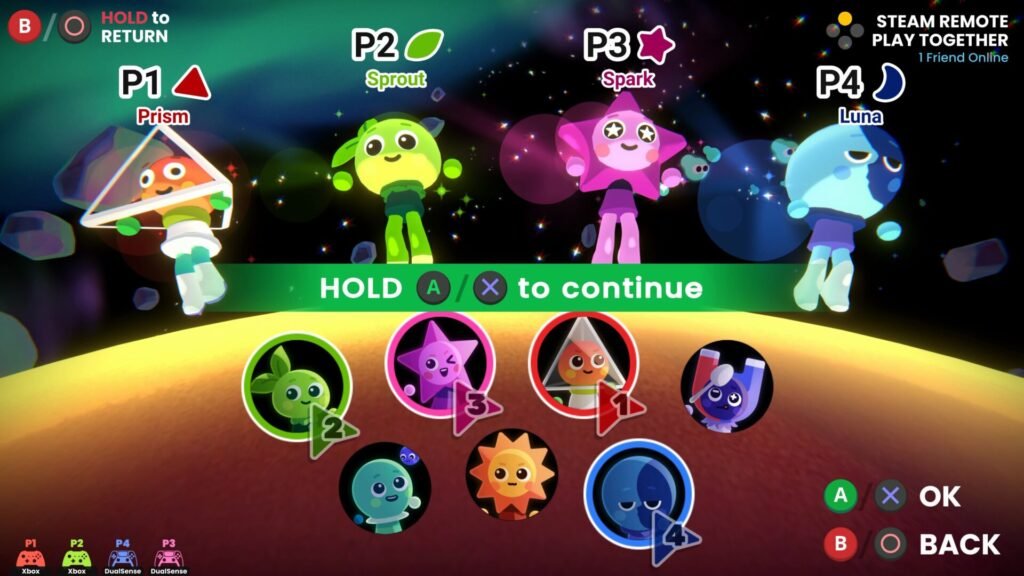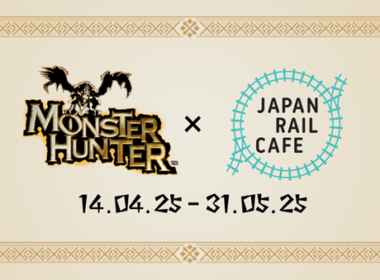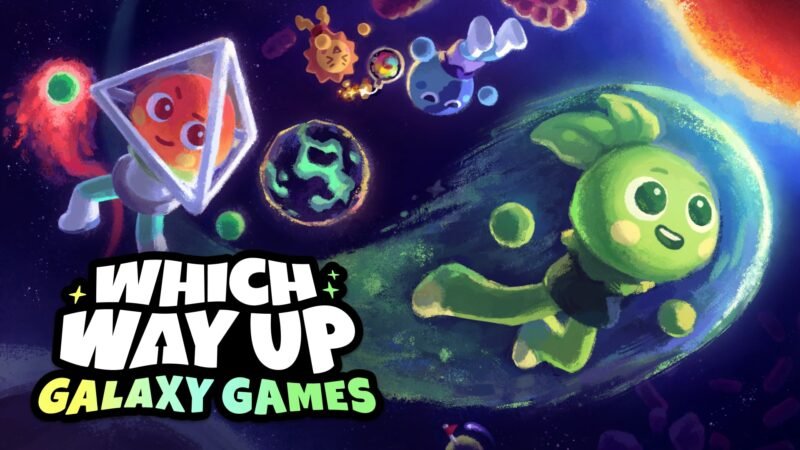Which Way Up: Galaxy Games is a party game for up to 4 players where you will jump, push and run to victory. The game’s key gimmick is that each platform or celestial body has its own gravitational pull, allowing players to run along a platform while upside down, or even alter their jumping trajectory based on the gravitational pulls of these platforms.
If I were to compare this game’s movement with a different game that is more widely known by all, it would be as if Super Mario Galaxy were a 2D game. This small tweak to the platforming formula does make the movement in-game much more interesting and fresh, although it does take a bit of time to get used to moving in-game effectively. Once you do though, it feels great to control and play all of the various mini-games that fully utilise these movesets.

While the movement of the game feels fresh and interesting with the gravity mechanic, it makes precise maneuvers somewhat challenging. This is especially apparent in the single player mode where precise maneuvers are needed to clear the stages quickly and earn the maximum amount of medals. Perhaps due to how the regular platforming rules are flipped on its head, I never quite got to the point of mastering its movement.


However, the main point of the game is its multiplayer mode and how it plays as a ‘party game’. In that department, I think it passes with flying colors!
The various game modes offered are both interesting and easy to pick up in a party setting, which is absolutely perfect for its main target audience. Some game modes are extremely straightforward, like Event Horizon, where you try to outrun a blackhole and aim to be the last one standing. These games, while straightforward, still feel fresh because of how your character moves in-game, distancing itself from other titles that may have similar concepts.
Other game modes like Overload are just a game of Hot Potato, and it is just tons of fun when played with friends. Most, if not all of the party games are easy to pick up and understand almost immediately, and it’s also incredibly varied. Some are pure chaos like Overload, while others are more precision-oriented like Hole in One. This variety shakes things up and creates a more varied experience as your party plays through these games.

Overall, this is a nice addition to your library of party games, being easy to pick up and play for an hour or two with a group of friends. Much like most party games, this is one where the more’s the merrier, and it would definitely be best played with a full group of 4 people. The game also supports Steam Play Together, which allows Steam users to easily play with your friends online.












